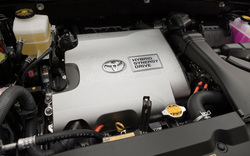
Today, hybrid cars have gained a lot of momentum and the most interesting thing to look out for is the way of working of these cars. Usually, it has been viewed that if more than one source works as an impetus to enable a vehicle work then it should be called a hybrid vehicle. In a hybrid car, the two power sources are the internal combustion and an electric motor. While the electric motor is run by the battery, it is the gasoline that is obtained from the fuel that provides power to the engine.
A parallel hybrid, one of the types of hybrid cars, runs both on electric motor and gasoline engine that work independently. Being linked to transmission, both can run the car at the same time which implies that the electric motor supports the engine in it. On the other hand, another type of hybrid known as series hybrid has a generator that either charges the battery or provides the power to run an electric motor. With the very same reason, the gasoline engine will not power the transmission at any time and never enable in driving the car.
Toyota hybrid transmission enables hybrid vehicles to charge their batteries when the driver wants to reduce the celerity of the vehicle. When the brakes are applied, it is not the engine driving the motor or motor driving the transmission, the transmission drives the motor. The functions of the generator are imbibed by the motor which will produce electricity to be stored in the battery. Therefore, the batteries will be charged by the hybrid car when the speed of the car will be decreased.
In a Toyota hybrid battery, lots depend on mileage and plans for the vehicle. There is a huge possibility of individual cell replacement. The longevity of these cells entirely depends on how much miles the vehicle will run and how much time it will last.
A parallel hybrid, one of the types of hybrid cars, runs both on electric motor and gasoline engine that work independently. Being linked to transmission, both can run the car at the same time which implies that the electric motor supports the engine in it. On the other hand, another type of hybrid known as series hybrid has a generator that either charges the battery or provides the power to run an electric motor. With the very same reason, the gasoline engine will not power the transmission at any time and never enable in driving the car.
Toyota hybrid transmission enables hybrid vehicles to charge their batteries when the driver wants to reduce the celerity of the vehicle. When the brakes are applied, it is not the engine driving the motor or motor driving the transmission, the transmission drives the motor. The functions of the generator are imbibed by the motor which will produce electricity to be stored in the battery. Therefore, the batteries will be charged by the hybrid car when the speed of the car will be decreased.
In a Toyota hybrid battery, lots depend on mileage and plans for the vehicle. There is a huge possibility of individual cell replacement. The longevity of these cells entirely depends on how much miles the vehicle will run and how much time it will last.
 RSS Feed
RSS Feed